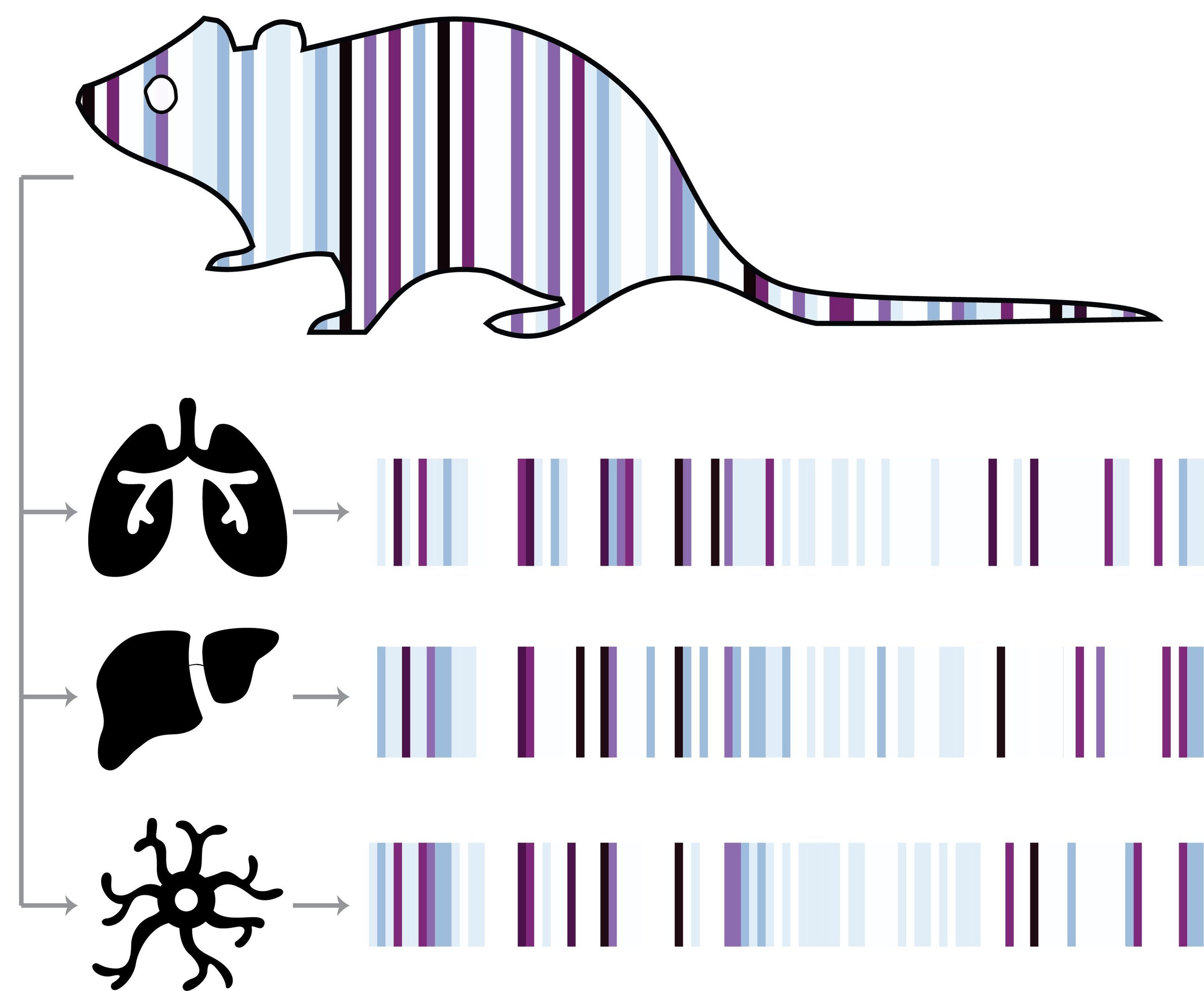Finding the physical pathways that create consciousness in the brain has eluded scientists thus far.



All humans begin life as a single cell that divides repeatedly to form two, then four, then eight cells, all the way up to the ~26 billion cells that make up a newborn. Tracing how and when those 26 billion cells arise from one zygote is the grand challenge of developmental biology, a field that has so far only been able to capture and analyze snapshots of the development process.
Now, a new method developed by scientists at the Wyss Institute and Harvard Medical School (HMS) finally brings that daunting task into the realm of possibility using evolving genetic barcodes that actively record the process of cell division in developing mice, enabling the lineage of every cell in a mouse’s body to be traced back to its single-celled origin.
The research is published today in Science as a First Release article.

Life extension would give us more time to enjoy; why not?
At times, meeting people feels like going to the theater. Conversations tend to revolve around the same topics and can sound so cliché that they seem scripted. Of course, it depends on the people—close friends tend to be far more genuine than that—but if you pay attention during a conversation, a certain topic will pop up several times: aging.
Depending on the age of the people involved, the way they discuss aging will be different. Teenagers probably won’t even touch the subject; it generally starts creeping up in conversations once working life has begun or is about to begin. At this stage, chronological and biological aging are mostly conflated; responsibilities, more demanding schedules, and abandoning student life are all seen as hallmarks of growing older, when, in fact, they are only signs of growing up and are not absolute.
Still, it is largely true that we become more busy as we get older, independent of biological aging. This is, in fact, a common complaint that subtly slips into most “grown-up conversations”; this is especially true in the case of parents, whose free time is understandably even more curtailed. Wouldn’t we all like to have more time?

If you’re one of the billions of people worldwide to use mass public transit regularly, you’re sharing a lot more than a commute with your fellow passengers, suggests a new study published Tuesday in Cell Reports. You’re also sharing and swapping the teeming microbes that call our bodies home.
Researchers in Hong Kong—home to a public transit system that services 5 million commuters every day—recruited volunteers for an unique experiment. Over the course of several days, volunteers were asked to ride one of eight subway lines on the Hong Kong Mass Transit Railway system during the morning and evening rush hour. Before they boarded, they washed their hands, and once on board, they made ample use of the handrails. After they spent 30 minutes on the train, they exited and had their palms swabbed by researchers.
Be sure to check out Ruby® Receptionists. They are the only virtual receptionist service dedicated to creating personal connections with your callers—building trust with every call and increasing the likelihood you’ve secured a customer for life. Why not stabilize your receptionist position with an outstanding virtual service. You can also try out Ruby® Receptionists and save $75 off their first full month’s invoice by clicking on the link!
https://bit.ly/2lDMR0T
“Artificial Intelligence is not just a large part of a technological revolution, it’s a major part of a human evolution of going beyond the limits of an environmentally programmed human biological operating system.”
Is Facebook And Social Media Psychologically Destroying This Generation?
Is-Facebook-And-Social-Media-Psychologically-Destroying-This-Generation
Are People Merging Into And With Their Smartphones?
Steve Jobs: Secrets of Life
Check out this amazing video, from Andy Grove Co-founder of Intel in a 1999 Interview talking about technology and human intuition.

It’s almost the weekend and what better way to celebrate than a nice long interview with one of the Heroes of aging research? Today we bring you a mega-interview with Dr. Aubrey de Grey.
Today we have an interview with Dr. Aubrey de Grey from the SENS Research Foundation. This interview conducted by Yuri Deigin was originally published in Russian language and he has kindly translated it into English so our audience can enjoy it too.
Yuri: Aubrey, thank you very much for agreeing to this interview. Why don’t we dive right in? I am sure everybody asks you this: how and when did you become interested in aging, and when did you decide to make it your life’s mission to defeat it?
Aubrey de Grey: I became interested in aging and decided to work on it in my late 20s, so, in the early 1990s. The reason I became interested was because that was when I discovered that other biologists were almost all not interested in it. They did not think that aging was a particularly important or interesting question. I had always assumed, throughout my whole life, that aging was obviously the world’s most important problem. I thought that people who understood biology would be working on it really hard. Then, I discovered that wasn’t true and that hardly any biologists were working on it. The ones that were weren’t doing it very well, not very productively as far as I could see. I thought I’d better have a go myself, so I switched fields from my previous research area, which was artificial intelligence.
To understand our future evolution we need to look to our past.
Will our descendants be cyborgs with hi-tech machine implants, regrowable limbs and cameras for eyes like something out of a science fiction novel?
Might humans morph into a hybrid species of biological and artificial beings? Or could we become smaller or taller, thinner or fatter, or even with different facial features and skin colour?